Season 6: Episode #152
Podcast with Jeremy Cauwels, MD, FACP, FHM, Chief Medical Officer, Sanford Health
Share
In this episode, Jeremy Cauwels, MD, FACP, FHM, Chief Medical Officer of Sanford Health, shares his journey into the technology side of healthcare to enhance patient access. He explores Sanford’s Virtual Care Center, AI-driven risk assessment for colon cancer screening, and the expanding role of telemedicine.
Dr. Cauwels highlights the rising demand for virtual visits and the adoption of text-based patient monitoring tools to improve care delivery. He discusses how technology enhances patient access, boosts clinician efficiency, and transforms medical education. Dr. Cauwels also talks about the impact of AI in streamlining workflows, including adoption of automated dictation and ambient listening technologies that improve doctor-patient interactions while reducing clinician workload. Take a listen.
Show Notes |
||||
| 01:14 | What interests you in the healthcare industry segment to become the CIO of a hospital system? | |||
| 02:47 | How long have you been in the leadership position at UMC, where is it located, and what kind of population does it serve? | |||
| 03:35 | You have done a lot of work from technology perspective to support the business needs of the hospital. You've done over 200 applications and transformed the EMR system. Would you like to share with the audience the thought process that drove those changes and what were some of those changes? | |||
| 07:47 | What do you think about your digital transformation efforts? If you could describe a few of them which have had impact on the patient population. | |||
| 08:30 | Please describe in your own, you know, way that what is digital transformation for provider systems such as yours? Where do you see it going? Some of the challenges that you might have faced and how did it actually end up impacting patients? | |||
| 11:24 | How did you manage to change the mindset of the people? How did they manage to change themselves? To adapt to this new world where technology, especially with AI and GenAI and other new technologies which are coming our way, how do you change mindsets and change behaviors and change culture over there? | |||
| 13:00 | Would you like to provide one example of how the technologies which you were implementing, and you continue to be implementing in your hospital system are accessible and usable by a variety of users, including within the hospital and outside the hospital. | |||
| 16:28 | How do you innovate? Do you involve external parties? Do you have some kind of a, you know, innovation focus department? Or is it part and parcel of everybody's, you know, kind of like daily life? | |||
| 19:24 | What are your thoughts on new technologies, especially Gen AI? Have you been experimenting with any predictive analytics or large language models? What would be your advice or thoughts to any other healthcare leaders on how to go about this journey of exploration? | |||
| 22:15 | Standing here now and looking back, if you were able to go back and change one or two things, what would you like to do differently or have done differently? | |||
Video Podcast and Extracts
About Our Guest
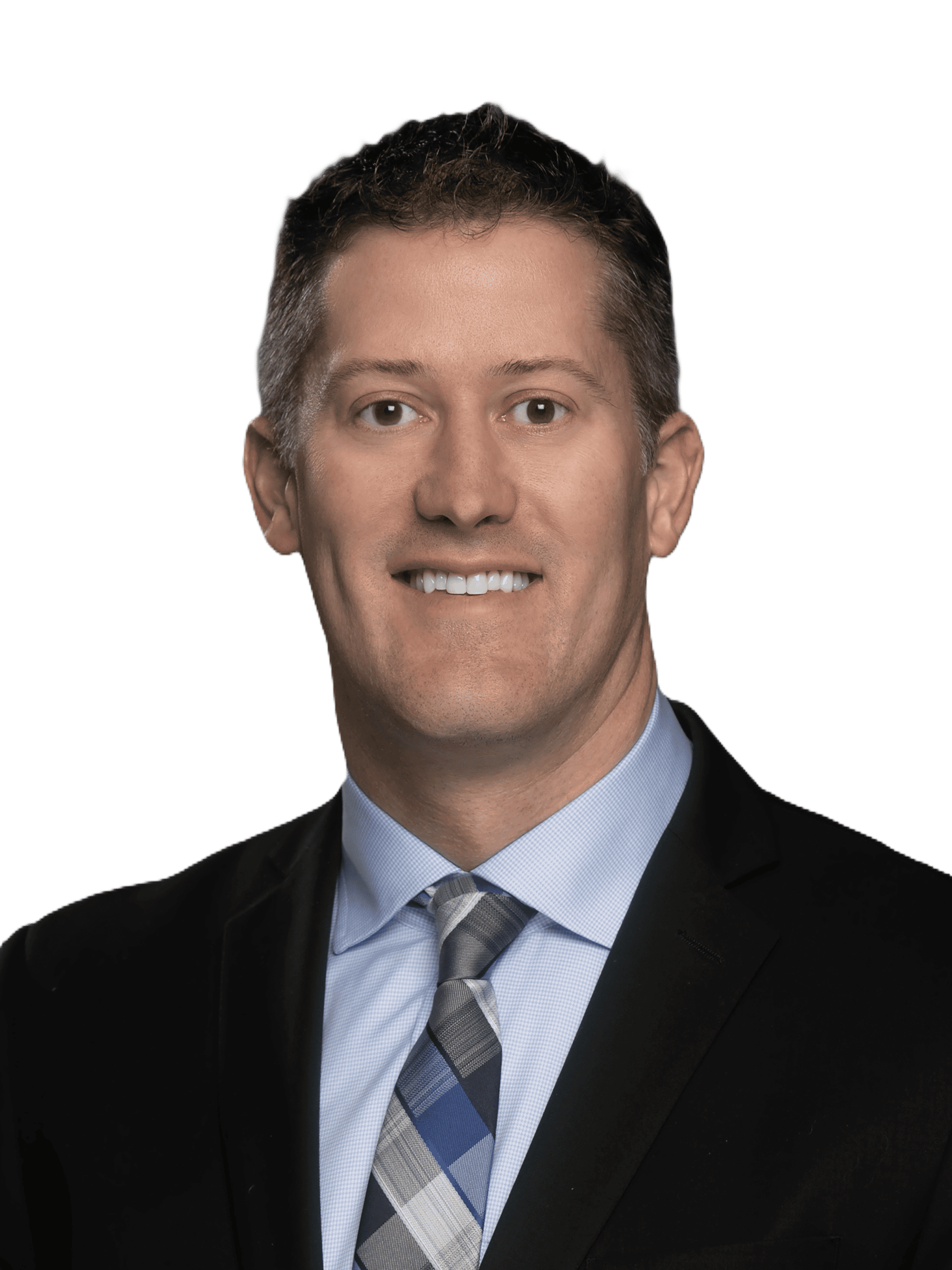
Jeremy Cauwels, MD, FACP, FHM, is chief medical officer for Sanford Health, the largest rural health system in the country. In this role, he represents physician interests to the executive leadership team and Board of Trustees. He also chairs the quality cabinet, leads enterprise aspects of the medical staff and oversees the system’s graduate medical education program.
Dr. Cauwels has been a champion for creating a culture of safety through a systemwide quality and safety initiative, Sanford Accountability for Excellence (SAFE). The program focuses on implementing solutions to challenges in four key areas: clinical quality, patient safety, employee engagement and physician well-being.
Under Dr. Cauwels’ leadership, quality and safety scores have significantly improved across the organization. Since 2019, serious safety event rates have dropped by 80% at Sanford Bismarck and Sanford Bemidji, while Sanford Fargo earned a 5-star CMS rating in 2024. Dr. Cauwels ensures that the SAFE program has the operational, financial and leadership support necessary for this work.
Dr. Cauwels has also played an instrumental role in overseeing an expansion of graduate medical education programs. In partnership with universities across our region, and thanks to a $300 million philanthropic gift, Sanford Health will fully fund 15 additional residency and fellowship programs for a total of 27 programs, which will train more than 350 residents and fellows a year by 2027.
An influential voice in the industry, Dr. Cauwels is regularly invited to contribute his clinical expertise, unique perspective and forward-looking insights on rural health care delivery. He has presented at high-profile national events including the Modern Healthcare Digital Transformation Summit, Becker’s Healthcare Annual Meeting and Reuters Digital Health Summit, among others.
Dr. Cauwels is a trusted voice locally and nationally. He is a tireless advocate for bringing care closer to patients and believes virtual care is one of the most important tools we have to reduce barriers to access, engage patients in their care and address rural provider shortages.
Prior to his appointment to chief medical officer in 2021, Dr. Cauwels led safety, quality and patient experience as senior vice president of quality. He also served as vice president and chief medical officer for Sanford Health Plan. Cauwels started with Sanford Health as a hospitalist in Sioux Falls in 2006, was promoted to director of the group and eventually became Sanford USD Medical Center’s chief of staff.
Born in South Dakota and raised in northwest Iowa, Dr. Cauwels has bachelor’s degrees in chemistry and biology from the University of Northern Iowa and a medical degree from the University of Iowa Carver College of Medicine. He completed his residency and a chief resident year at the University of Kansas in Kansas City, Kansas. He is a fellow of the American College of Physicians and the Society of Hospital Medicine. He also serves on the American Hospital Association Physician Council.
Dr. Cauwels and his wife, Teresa, live in Sioux Falls with their three children.
Recent Episodes
Q: Welcome to The Big Unlock podcast. It is great to have you as our guest. We are looking forward to an exciting discussion to share with our audience.
I’m Rohit Mahajan, CEO and Managing Partner for Damo Consulting and BigRio. As you may know, we’ve done over 150 of these episodes, and I believe this is our 152nd episode of The Big Unlock podcast. With that said, would you like to introduce yourself?
Jeremy: Absolutely. First of all, Rohit, thank you very much for the opportunity to speak on The Big Unlock podcast and to all the listeners out there—I appreciate it.
My name is Jeremy Cauwels, and I serve as the Chief Medical Officer for Sanford Health, based in the Upper Midwest. I have been in this role for roughly the last five or six years. Before that, I worked in direct patient care as a hospitalist at the Sanford USD Medical Center in Sioux Falls, South Dakota, where I still currently live.
At Sanford, we provide care for roughly 425,000 lives from a health plan standpoint and 2.4 million lives from a broader patient population perspective. We cover a large geographical area, stretching from Wyoming in the west to Wisconsin and even the Upper Peninsula of Michigan in the east. Our largest medical centers are primarily located in South Dakota and North Dakota, both affiliated with the universities in those states.
Recently, we also expanded through the acquisition of the Marshfield Clinic, adding additional clinic sites in and around Marshfield, Wisconsin. This has been an excellent addition to our system.
Sanford Health operates 56 hospitals, over 270 clinics, and 144 senior care communities. Currently, we have 4,500 physicians and advanced practice providers.
For perspective, I used to say that we covered a landmass the size of Texas. Now, we are even larger than Texas.
Q: Wow, that’s amazing. And in the rural setting too, Jeremy, so that makes it even more challenging in terms of being able to reach the patients and serve them in such a setting, right? Where you’re covering such rural areas.
Jeremy: Absolutely. If you think about the Dakotas, western Minnesota, and northern Wisconsin, all of those areas are known for relatively small towns and communities—lots of open space between people, generally farming or ranching communities.
So, it is not unusual for us to deal every day with patients who may have to drive an hour or two hours to see their doctor, and potentially even farther to see a specialist.
Q: That’s amazing. So, Jeremy, please tell us more about how you ended up on the technology side of things. You started, as you said, as a physician and were practicing. What attracted or motivated you to this side of the house?
Jeremy: For me, it was really about how we reach patients. When I stepped into this role, I wanted to quickly understand what technology could do to help us overcome the longstanding challenges of healthcare access in the Midwest.
What we know is that many of the counties we live and work in are considered healthcare deserts. Even more of them are mental healthcare deserts. It’s impossible for many families to take a full day off work to drive to the doctor’s office, have a 15-minute appointment, and then drive back home—especially for single-parent families or those where making ends meet every day is the primary concern.
What got me into this was the idea that we could provide virtual care to patients and meet them where they live. Rather than the old phrase, “Your doctor will see you now,” we like to think of it as, “The patient will see us now.”
Q: That’s beautiful. That’s a great flip. So, talking about all things digital—you mentioned telehealth and telemedicine as well. What are some of the digital initiatives you’ve worked on in the past, and what are you looking at for the future? Jeremy, can you share how this digital front door or digital approach is likely to increase access for patients?
Jeremy: Absolutely. Thankfully, Sanford has been blessed with philanthropic support dollars that have been earmarked for improving our digital health footprint. With that, we’ve been able to expand. We actually just opened our virtual care center, a standalone building outside of our hospitals focused on using technology to better reach our patients.
Inside, you’ll find everything from 3D-printed models that physicians can use to understand anatomy before they have to work with it firsthand, to virtual connections that allow physicians to see patients remotely. More importantly, as an educational organization, we have nearly 350 residents and fellows at any given time. So, having the ability to teach them “webside manner” instead of bedside manner—getting them comfortable interacting through a screen, just like you and I are talking today—is critically important.
We also have an innovation hub, a safe space where we can test digital tools in ways we wouldn’t be able to during an actual patient encounter. Alongside that, we house a significant portion of our clinical operations for virtual care in the same building. That way, if something isn’t working as it should, IT resources are right there to ensure smoother operations. They’ve done a wonderful job of putting all of these resources at our fingertips in one location.
Q: That’s awesome. And, Jeremy, in any podcast these days, it’s impossible to avoid the topic of AI and GenAI. So, of course, I have to bring it up—what are your thoughts on AI? Have you been using any traditional AI, and now more generative AI, in your innovation initiatives?
Jeremy: Absolutely. One of the things we’ve focused on with AI is making physicians more efficient in finding the information they already have access to—if only they had unlimited time to pore over the electronic medical record.
For example, we’ve published research with the American College of Gastroenterology showing that our AI can identify 85 different factors that affect an individual’s risk for colon cancer. It can literally score you and explain why my risk for colon cancer might be different from yours.
The upper Midwest has a higher risk for colon cancer, and it’s also an area where screening rates are lower than they should be. So, we’ve been pushing forward, gathering the evidence base we need to roll out a prospective study that proves this AI model works. The goal is to help physicians by giving them real-time insights—when they look at a patient, the screen next to them might say, “Jeremy is at higher risk, and we may need to be more aggressive with screening.”
Another challenge we’ve tackled is the shift in screening guidelines. A couple of years ago, the U.S. Preventive Services Task Force lowered the recommended screening age for colon cancer from 50 to 45. In the Dakotas and the upper Midwest, that change meant that overnight, 100,000 people who didn’t need screening yesterday suddenly did today.
So, we had to think beyond just colonoscopies. How do we reach people who may not be able to come in? One way is through stool-based testing that can be done at home. And as you can imagine, whether someone lives in Howard, South Dakota—a town of 848 people—or anywhere else, they’re used to getting Amazon deliveries. They know how that works. So, if we can put a box at their door that helps them stay on top of their healthcare, we’re moving them forward.
We’ve worked hard to bring all these programs together—not just for patients at normal risk but also to identify who’s at slightly higher risk versus significantly higher risk. Because of who we are and the extensive data we have on our patients, we can personalize care in a way that wasn’t possible before.
Q: I see. Just a curious question coming to mind, Jeremy—do you see a very diverse patient population speaking many different languages, or is it pretty homogenous? How does it look when you do population health analytics?
Jeremy: Interestingly enough, we have more diversity than people expect in the Upper Midwest.
The largest ethnically diverse group is Native Americans. In some of our regions, the three counties surrounding some of our hospitals are entirely Native American land. In South Dakota alone, three of the poorest counties in the United States are on Native American land. So, those areas present unique challenges that we have to work through.
I’ll also say that one of the communities we regularly serve speaks 57 different languages because a large portion of that town and county is supported by the meatpacking industry. We have several areas like that, where different ethnic pockets of people absolutely need to be served and cared for—regardless of their ethnic background or the language they speak.
The key question is: What is the best way to reach them? How do we find the approach that works for them?
Q: And again, a curious question—one of our clients is one of the largest telemedicine companies. We saw a huge spike during COVID in telemedicine visits, up to 8,000%. But now, people seem to be going back to normal, and COVID is starting to be forgotten.
How has your experience been with telemedicine visits, given the geography and rural nature of your area?
Jeremy: So far, we’ve saved our patients roughly 33 million miles of driving. To put that in perspective, that’s about the closest distance Mars gets to Earth during its rotation.
In addition to that, we’ve now done over 800,000 virtual visits. Twenty percent of our mental health visits every month are still virtual—one in five patients still choose to see their mental health provider virtually.
Some of that may be because they simply can’t find a mental health provider in their area. But for others, it’s about privacy. I drive a blue Ford pickup, and in some small towns, there are folks who wouldn’t want their blue Ford pickup seen parked outside a psychologist or psychiatrist’s office. Stigma still exists, and giving people the option to see their doctor in a way that makes the most sense for them is extraordinarily helpful.
Q: That’s great to know. One other thought I wanted to discuss with you, Jeremy—there are three aspects I’m trying to think about together: What are patients looking for? What are caregivers looking for? And what are clinicians looking for in some of these digital approaches you’re taking?
Jeremy: Absolutely. So, from the patient’s perspective—you can see over my right shoulder, I have three children. They’re much younger, and I’ll tell you, my kids haven’t gone to an in-person medical visit in the last year, except when they needed a sports physical.
If they feel ill, they set up a virtual visit. If they have a follow-up with a specialist, they do it virtually. What’s great is that it allows flexibility for both the specialist and the patient. My kids have even had medical visits while eating breakfast at the kitchen table. That concept would be unheard of to my parents, who would much rather drive to the doctor’s office than try to interact over the phone.
So, from a patient’s standpoint, there’s definitely a shift happening.
From a clinician’s perspective, we’ve been lucky enough to implement AI-driven automated dictation technology with ambient listening. One of our busiest family practice doctors recently switched to it—he simply sets his phone between himself and the patient, and he no longer has to look away at the computer screen.
Not only are his notes completed by the time he finishes his scheduled day at 5 PM, but he told me just the other day: “I finished my day at five, my notes were done by 5:15, I made it home for dinner with my family—which almost never happens—and I even had enough extra time to take my daughter to buy her first used car.”
That’s amazing. Ambient listening is definitely proving to be one of the top use cases for generative AI. I completely agree—it’s only going to grow from here.
People always talk about the “good old days,” whenever that was for them. But many doctors remember a time when they didn’t have to be attached to a keyboard, constantly documenting. This brings us back to that—where the most important thing is the interaction with the patient.
Whether it’s through a screen like this or one-on-one in a room, it’s a much more satisfying discussion for both the doctor and the patient.
Q: Yeah, that’s amazing, Jeremy. What are some of the digital tools or new approaches you’re using for taking care of patients at home, including remote patient monitoring and home-based care?
Jeremy: Yeah, so one of the things we rolled out in 2023 was a text-based patient monitoring tool.
We can use it for common diagnoses like diabetes, heart failure, and depression. We also use it for patients who have been discharged from the hospital to ensure they receive rapid follow-up and scheduled interventions. The technology allows patients to provide feedback without having to call, wait in line, or book an appointment.
I’ll share one example. We had a patient who came into one of our emergency rooms for depression. It’s always heartbreaking when someone is in such distress that the ER becomes their only option, but unfortunately, it happens every day across the country.
After discharge, we sent her home with this monitoring tool, and about a week or two later, she responded to a mood scale with a score of one out of ten. That immediately set off an alarm for us. We called her back and found out she was a single mother, overwhelmed by life’s challenges. She had already written a suicide note and was planning to end her life.
Because of this tool, we were able to intervene, get her the help she needed, and months later, she and her young family are continuing to grow and thrive.
Q: That’s an amazing story. As we come to the end of our conversation, Jeremy, any other thoughts you’d like to share with the audience? Any news or new initiatives you’re focusing on this year?
Jeremy: Sure. I’d like to expand on what I just mentioned about mental health. Many places across the country are what I’d call “mental health deserts.”
In our region, about 95% of the Dakotas—95% of our footprint—is in a mental health desert. That means there are limited providers and significant challenges in getting timely psychiatric care.
To address this, in addition to the virtual visits I mentioned earlier, we’ve implemented virtual psychiatry consults in our emergency rooms. If someone needs to see a psychiatrist and they’re already in an ER—which is never an ideal situation—they often have to wait until morning, or worse, wait for an open psychiatric bed, which could take days.
Now, instead of waiting, we can connect them with a licensed psychiatrist virtually, right there in the ER, even if the psychiatrist isn’t in the same city or state. That immediate access makes a huge difference in getting people the right care when they need it most.
Q: That’s amazing, Jeremy. It’s incredible that technology enables us to do this now. Any closing remarks?
Jeremy: I just want to say thank you. Thank you for allowing me to share a little bit about Sanford and how we continue to reach out to our patients. Despite the distances, we’re doing everything we can to bring them closer to the care they need.
We hope you enjoyed this podcast. Subscribe to our podcast series at www.thebigunlock.com and write to us at [email protected]
Disclaimer: This Q&A has been derived from the podcast transcript and has been edited for readability and clarity.
About the host
Paddy is the co-author of Healthcare Digital Transformation – How Consumerism, Technology and Pandemic are Accelerating the Future (Taylor & Francis, Aug 2020), along with Edward W. Marx. Paddy is also the author of the best-selling book The Big Unlock – Harnessing Data and Growing Digital Health Businesses in a Value-based Care Era (Archway Publishing, 2017). He is the host of the highly subscribed The Big Unlock podcast on digital transformation in healthcare featuring C-level executives from the healthcare and technology sectors. He is widely published and has a by-lined column in CIO Magazine and other respected industry publications.
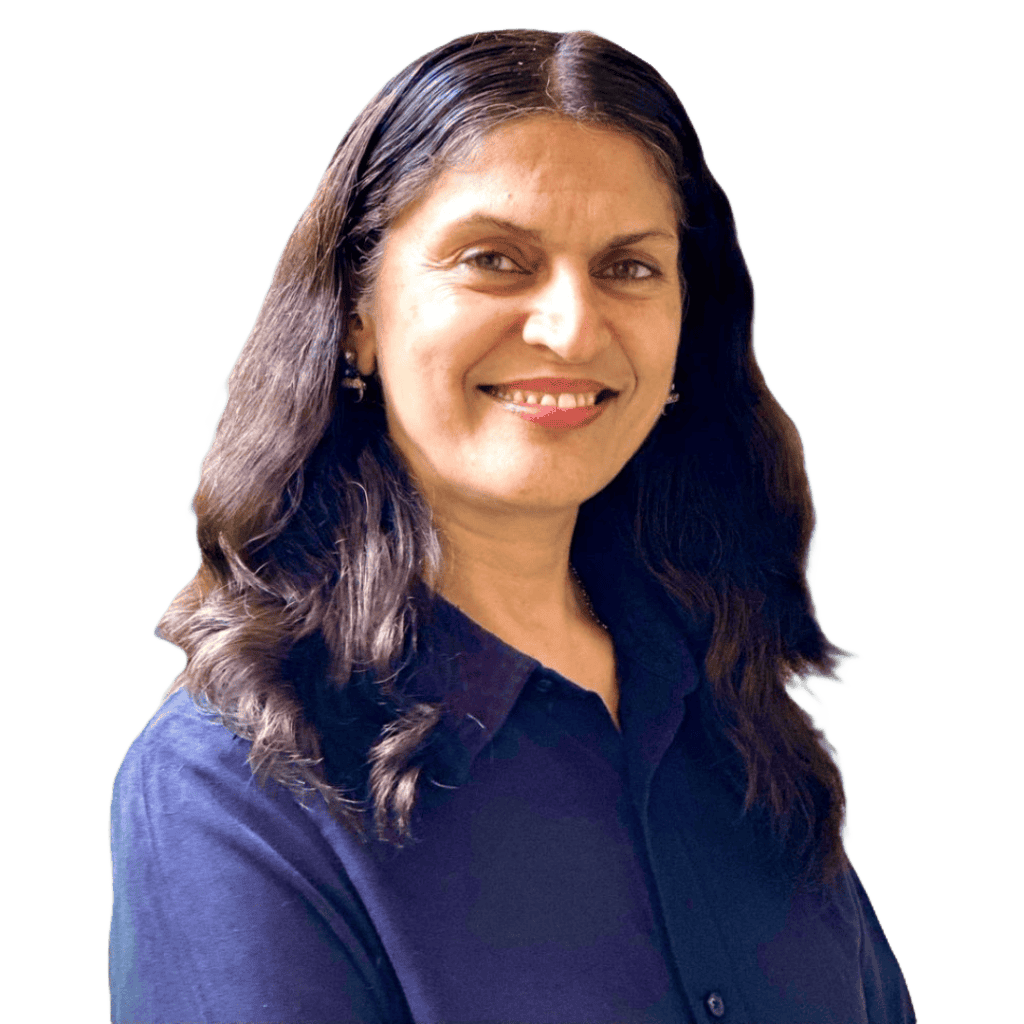
Ritu M. Uberoy has over twenty-five years of experience in the software and information technology industry in the United States and in India. She established Saviance Technologies in India and has been involved in the delivery of several successful software projects and products to clients in various industry segments.
Ritu completed AI for Health Care: Concepts and Applications from the Harvard T.H. Chan School of Public Health and Applied Generative AI for Digital Transformation from MIT Professional Education. She has successfully taught Gen AI concepts in a classroom setting in Houston and in workshop settings to C-Suite leaders in Boston and Cleveland. She attended HIMSS in March 2024 at Orlando and the Imagination in Action AI Summit at MIT in April 2024. She is also responsible for the GenAI Center of Excellence at BigRio and DigiMTM Digital Maturity Model and Assessment at Damo.
Ritu earned her Bachelor’s degree in Computer Science from Delhi Institute of Technology (now NSIT) and a Master’s degree in Computer Science from Santa Clara University in California. She has participated in the Fellow’s program at The Wharton School, University of Pennsylvania.
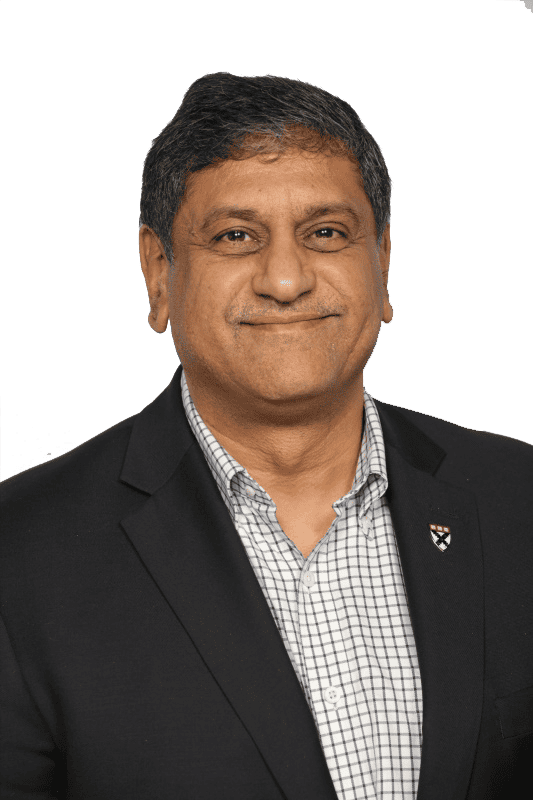
Rohit Mahajan is an entrepreneur and a leader in the information technology and software industry. His focus lies in the field of artificial intelligence and digital transformation. He has also written a book on Quantum Care, A Deep Dive into AI for Health Delivery and Research that has been published and has been trending #1 in several categories on Amazon.
Rohit is skilled in business and IT strategy, M&A, Sales & Marketing and Global Delivery. He holds a bachelor’s degree in Electronics and Communications Engineering, is a Wharton School Fellow and a graduate from the Harvard Business School.
Rohit is the CEO of Damo, Managing Partner and CEO of BigRio, the President at Citadel Discovery, Advisor at CarTwin, Managing Partner at C2R Tech, and Founder at BetterLungs. He has previously also worked with IBM and Wipro. He completed his executive education programs in AI in Business and Healthcare from MIT Sloan, MIT CSAIL and Harvard School of Public Health. He has completed the Global Healthcare Leaders Program from Harvard Medical School.
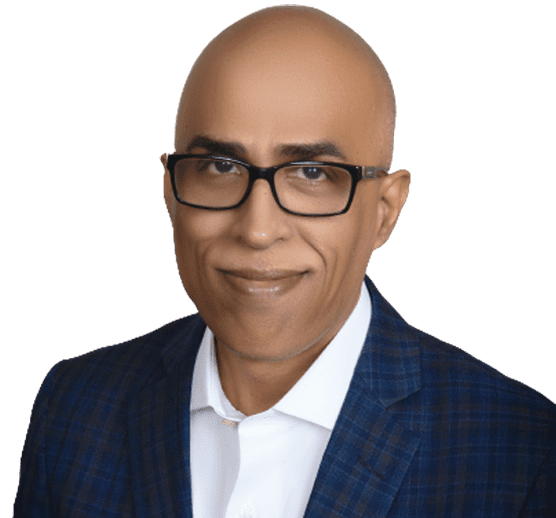
Paddy was the co-author of Healthcare Digital Transformation – How Consumerism, Technology and Pandemic are Accelerating the Future (Taylor & Francis, Aug 2020), along with Edward W. Marx. Paddy was also the author of the best-selling book The Big Unlock – Harnessing Data and Growing Digital Health Businesses in a Value-based Care Era (Archway Publishing, 2017). He was the host of the highly subscribed The Big Unlock podcast on digital transformation in healthcare featuring C-level executives from the healthcare and technology sectors. He was widely published and had a by-lined column in CIO Magazine and other respected industry publications.
Stay informed on the latest in digital health innovation and digital transformation